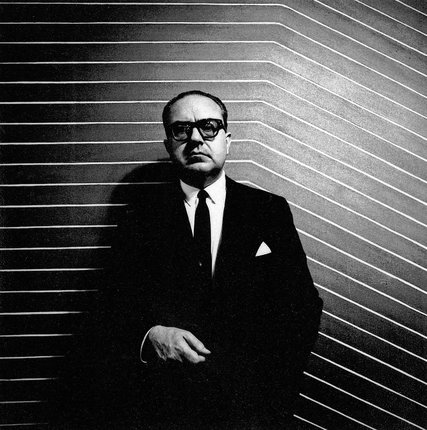New World members show versatility in 20th-century chamber program

Alberto GInastera’s String Quartet No. 1 was performed by New World Symphony members on Sunday. Photo: Annemarie Heinrich
Performing music composed within the past 85 years, members of the New World Symphony fellows were joined by Daniel Ching, founder of the Miró Quartet, in a program presented by The League of Composers Sunday afternoon at New World Center.
The repertoire chosen was a clear display of the diversity of musical idioms that emerged or developed throughout the 20th century – a period when there was no monopoly on a mainstream stylistic identity.
The first half featured two quintessential composers of their respective cultures – Benjamin Britten was represented with his Cello Sonata and Dmitri Shostakovich with the Five Pieces for Two Violins and Piano.
A product of the friendship between Britten and celebrated cellist Mstislav Rostropovich, the Cello Sonata stands as a canvas of Britten’s compositional language. Cellist Alexa Ciciretti and pianist John Wilson tackled the fluctuating characters of Britten’s five-movement work with ease in an admirable partnership. Both performers captures the juxtaposition of its stark and sparse textures with punctuating gestures, as well as its somber yet passionate lyricism. Ciciretti’s timbre evoked the lamenting sighs of the “Elegy” and Wilson’s sonorous chords provided an enveloping fabric of sound that sustained the depth of the movement.
Arranged by Levon Atovmian, the five vignettes that constitute Shostakovich’s lighthearted set, are a testimony to his affinity and talent for incidental music from original scores for film, ballet, and play. Violinists Alex Gonzalez, and Teddy Wiggins and pianist Anna Khanina executed these exquisite pieces with great finesse and, despite a few tuning issues, the performance was both poised and impassioned.
A brief musical monologue for solo oboe from Upingos by Carlos Chávez opened the second half with a sense of timeless charm as executed by Adèle-Marie Buis.
After two brief eruptive statements, a primeval and violent yet somewhat dance-like melody over hammered chords begins Alberto Ginastera’s String Quartet No. 1. Ginastera came to this genre in his early 30s, already a mature composer. Reminiscent of the rhythmic incisiveness of Bartók and Stravinsky, the first movement draws from Argentinean folk elements in a way that is disguised by Ginastera’s classically-trained craftsmanship.
Violinists Daniel Ching and Emerson Millar, violist Jesse Yukimura, and cellist Alan Okhubo were fully up to the demands of this challenging music in a performance that resonated with both confidence and subtlety.
The musicians’ playing in the third movement, “Calmo e poetico,” took one into a journey through the vast region of the Pampas as they sustained the spaciousness of the phrasing with impeccable bow control and expressive vibrato. In a tribute to his heritage, especially that of the gaucho [cowboy], Ginastera uses his signature “guitar chord” more extensively and explicitly here, framing the sections and the melodic exchange between the higher and lower string instruments. A sense of breathless suspension was projected through the intense musicianship of the performers. The other three movements showed off the quartet’s technical facility in their navigating varying textures and compound rhythms.
The concert ended with Danzón Cubano by Aaron Copland, arranged for two pianos, celesta, and percussion by Michael Linville. In his two visits to Cuba in 1941, Copland was greatly impressed by the music of the island. Although this work is not an authentic representation of the original music he heard, it is yet another fitting example of the stream of exoticism, very popular in the 20th century.
The playful homophonic theme recurs in different instrumentations, with nearly child-like innocence, highlighted by the “invisible” groove as Copland inhibits some of the beats creating a sense of uncertain motion. The musicians played to the semi-suave nature of the piece with great flair and the use of maracas and steelpan enhanced the Caribbean feel of the music.
Jeannette Sorrell conducts the New World Symphony in a Baroque program 7:30 p.m. March 10 and 2 p.m. March 11. nws.edu
Posted in Performances
Leave a Comment
Mon Mar 5, 2018
at 1:11 pm
No Comments






